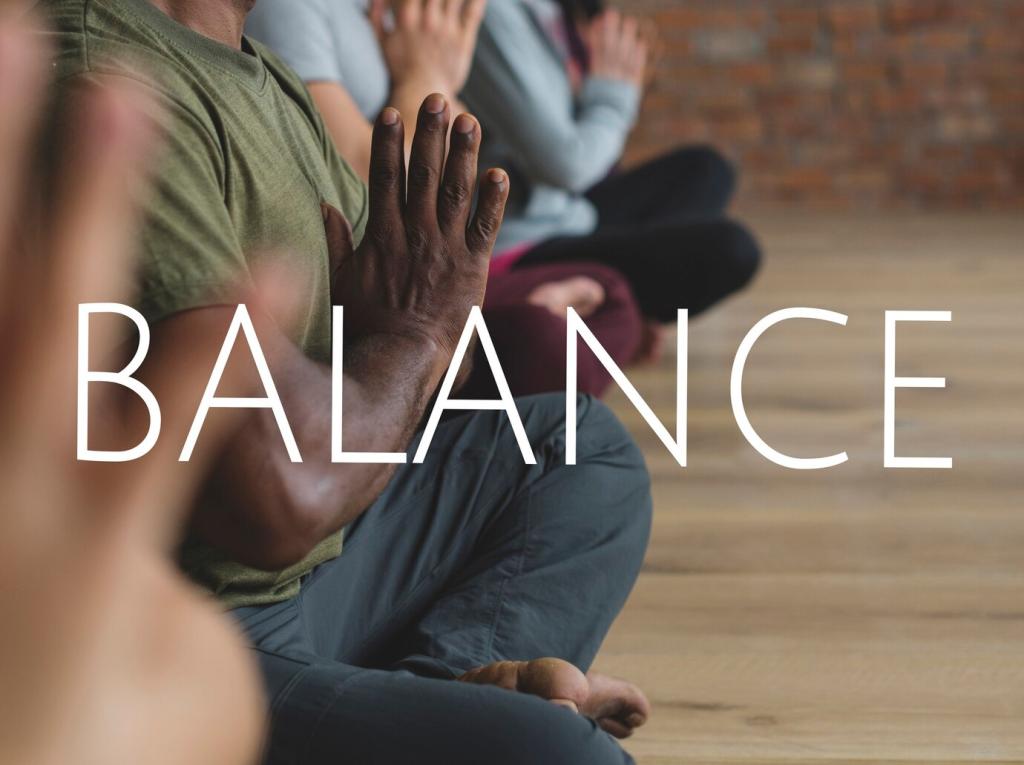
The Impact of Mindfulness on Sports Recovery
Chosen theme: The Impact of Mindfulness on Sports Recovery. Discover how simple, focused awareness can accelerate healing, reduce stress, and help athletes return stronger. Join the conversation, share your experiences, and subscribe for weekly recovery practices and stories.
What Mindfulness Really Means in Sports Recovery
By practicing presence after hard sessions, athletes downshift stress responses, easing cortisol and muscle tone. A few minutes of calm breathing and body scanning can soften protective tension, speeding circulation and tissue repair. Try it post-training and note differences.

How Mindfulness Accelerates Healing: The Science
Slow nasal breathing and nonjudgmental awareness raise vagal tone and heart rate variability, nudging the body toward recovery. Studies show reductions in pro-inflammatory cytokines, including IL‑6 and TNF‑alpha, when stress reactivity lowers. Track your calm-down window and compare soreness next morning.
How Mindfulness Accelerates Healing: The Science
Mindfulness changes how the brain interprets signals, reducing pain catastrophizing while improving motor relearning. Athletes become better at distinguishing hurt from harm, moving with cleaner patterns. Practice labeling sensations neutrally, then notice how confidence and range of motion grow together.
How Mindfulness Accelerates Healing: The Science
Mindfulness supports faster sleep onset and deeper slow-wave sleep, where growth hormone pulses and tissues rebuild. It also steadies REM cycles for emotional regulation after competition. Establish a ten-minute pre-sleep practice tonight and share your results with our readers tomorrow.

The 5-5-5 Wind-Down Drill
Spend five minutes on slow nasal breathing, scan five body zones for tension, and write five gratitude notes about your session. Pair this with light stretching. Bookmark this drill, and subscribe for an audio guide and weekly progress prompts.

Mindful Mobility Circuit
Link breath to motion: three 4‑7‑8 breaths, then controlled 90/90 hip switches, thoracic rotations, and cat‑cow with two-second pauses. Keep attention on texture and temperature changes. Share your favorite mindfulness cues so others can refine their mobility flow.
Stories from Athletes and Coaches
Rowing Crew Turnaround
A university crew added six minutes of mindful cooldown and brief gratitude circles. Over eight weeks, illness days dropped, split variability tightened, and athletes reported calmer nerves at regattas. If you coach, try a pilot and share your team’s observations.
High School Coach’s Discovery
A track coach taught mindful breathing between plyometric sets during return-to-sprint phases. Athletes showed better landing mechanics and fewer flare-ups. What surprised him most? Improved adherence to rehab homework. Comment if you want his checklist; we’ll compile and send it.
Weekend Warrior Win
A parent training for a charity 10K halved soreness by pairing mindful showers with gentle mobility and reflective journaling. Not perfect, just consistent. Their note: naming tension kindly made stretching feel rewarding. Share your small wins to motivate new members.
Measuring What Matters
Subjective Markers That Predict Performance
Record sleep quality, mood, soreness, and session RPE alongside minutes of mindfulness. Trends often reveal readiness better than single numbers. Start a simple log this week and post what patterns you notice after three training cycles.


HRV and Resting Heart Rate
Morning HRV and resting heart rate show how your nervous system is adapting. Many athletes see steadier HRV after two mindful weeks. Test it yourself, and tell us whether your perceived recovery aligns with the data you collect.
Make It Normal, Not Novel
Add a calm minute to pre-warmups, reflect for two minutes in cooldown circles, and place visual cues near training exits. Small repetitions beat occasional marathons. What cue would your team actually use? Post your mantra or reminder phrase below.
Language That Reduces Fear
Guide athletes with curiosity, not alarm: “Notice, breathe, adjust.” Acceptance-based prompts reduce guarding and improve coordination. Practice this language in your next session, and share the phrase that helped your athletes relax without losing intensity.
Sustaining the Habit
Create anchors: breath before hydration, a quick scan before showers, two mindful steps before leaving the facility. Tie practices to existing habits. Subscribe for printable habit stacks and tell us which anchor keeps your recovery routine alive.
